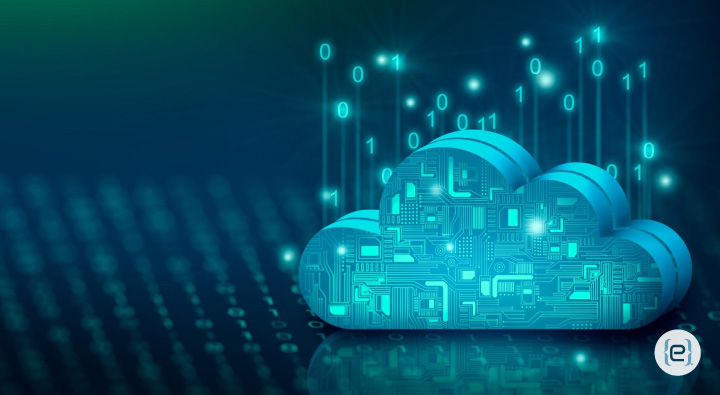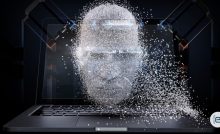Edge Computing vs. Cloud Computing: Which Approach Fits Your Business?


Technology continues to evolve, offering businesses new ways to manage and process data. Two major paradigms—cloud computing and edge computing—have opened up transformative opportunities, but serve distinct needs and use cases. In this blog, we’ll break down the differences between edge and cloud computing, explore their benefits and limitations, and show how both can work together in your organization’s digital environment.
Understanding Cloud Computing
Cloud computing centralizes data storage, processing, and management in remote data centers. With cloud, your business can access servers, storage, and applications over the internet, scaling resources as needed and paying only for what you use.
Key Characteristics of Cloud Computing:
- Centralization: Data resides in large-scale, secure data centers for storage and processing.
- Scalability: Scale resources up or down instantly to match your needs.
- Global Access: Applications and data are accessible worldwide over the internet.
- Pay-As-You-Go: Only pay for the resources you consume.
Common Applications:
- Web Hosting: Host your website or application on platforms like AWS or Microsoft Azure.
- Data Analytics: Process large datasets for valuable business insights.
- Software as a Service (SaaS): Use productivity suites like Google Workspace or Microsoft 365.
Advantages of Cloud Computing:
- Efficiency: Minimize onsite infrastructure and maintenance.
- Worldwide Access: Tap into resources from anywhere, anytime.
- Elastic Resource Management: Auto-scale resources to match demand.
Limitations of Cloud Computing:
- Latency: Real-time applications may suffer from delays.
- Bandwidth Costs: High data transmission can get expensive.
- Connectivity Dependency: Requires a stable internet connection.
Understanding Edge Computing
Edge computing brings data processing closer to where data is generated—whether that’s IoT devices, sensors, or local machines. Instead of sending all data to a central server, edge computing processes much of it locally, reducing latency and bandwidth use.
Key Characteristics of Edge Computing:
- Decentralization: Data is processed near its source for faster results.
- Low Latency: Proximity to data sources reduces delay.
- Real-Time Processing: Ideal for applications needing instant analysis.
- Reduced Bandwidth: Less data sent to central servers lowers network costs.
Common Applications:
- IoT Devices: Powering smart homes, connected cars, and industrial sensors.
- Healthcare: Enabling remote patient monitoring and diagnostics.
- Autonomous Vehicles: Processing sensory data instantly for safe navigation.
Advantages of Edge Computing:
- Real-Time Processing: Make split-second decisions in critical applications.
- Lower Latency: Eliminate delays caused by long-distance data travel.
- Enhanced Privacy: Keep sensitive data on local devices.
Limitations of Edge Computing:
- Complexity: Managing many decentralized nodes can be challenging.
- Limited Resources: Local devices may lack the power of large data centers.
- Security: Distributed architecture can expose new vulnerabilities.
How Edge and Cloud Computing Work Together
Rather than competing, edge and cloud computing often complement each other, creating hybrid solutions that deliver the best of both worlds. For example:
- Hybrid Models: Process real-time data at the edge, while sending less time-sensitive information to the cloud for storage and advanced analytics.
- IoT Ecosystems: Edge handles immediate decisions, while the cloud runs machine learning models and deep analytics.
- Smart Cities: Local edge devices manage traffic flow instantly, and the cloud analyzes historical data for urban planning.
By integrating both paradigms, your business can achieve real-time responsiveness and long-term scalability.
Choosing the Right Approach for Your Business
The future lies in a balanced approach between edge and cloud computing. As technology advances, several trends will shape this landscape:
- 5G Networks: Ultra-low latency will make it easier to blend edge and cloud capabilities.
- Artificial Intelligence: AI will optimize resource allocation and performance in both paradigms.
- Sustainability: Reducing long-distance data transfers cuts energy consumption, making your IT operations greener.
For many organizations, a hybrid strategy delivers the flexibility, efficiency, and resilience needed in today’s data-driven world. If you’re ready to explore how edge and cloud computing can transform your business, contact eMazzanti today to learn how we can help you build a secure, scalable, and future-ready IT environment. Let’s unlock the power of both worlds together!
Recent Posts
Server Simplified
At eMazzanti Technologies, we recognize that stable, effective, and expandable servers are essential to the seamless operation of enterprises. For this reason, we collaborate with Hewlett Packard Enterprise (HPE) to offer our clients the best server solutions possible, customized to meet their unique requirements. HPE servers provide the performance and flexibility required for small and big businesses to manage data, support apps, and manage workloads with ease. Customers may choose the best HPE servers for their organization with the assistance of our team of specialists. We take the time to comprehend the particular needs of every client, including those related to processing speed, storage capacity, and security features. Whether our clients require a general-purpose ProLiant server or a…
How to Make Your AI Copy Sound Authentic: Writing Like a Human, Not a Machine
AI writing tools have become popular for creating content quickly. But many readers can spot…
Data Analytics for Old-School Business Owners: Turning Dusty Ledgers into Gold Mines
Data analytics is changing the game for businesses of all types, including old-school industries that…
Windows Snipping Tool Tips and Tricks: Mastering the Art of Screen Capture
The Windows snipping tool is an extremely convenient utility for capturing screenshots quickly. It serves…
Harry Potter with a Lightsaber: A Wizard’s Guide to Space Magic
What if Harry Potter swapped his wand for a lightsaber? Explore the hilarious and chaotic…
Cold Bot Attacks
Automation and artificial intelligence have transformed our digital lives and delivered immense convenience but also…


